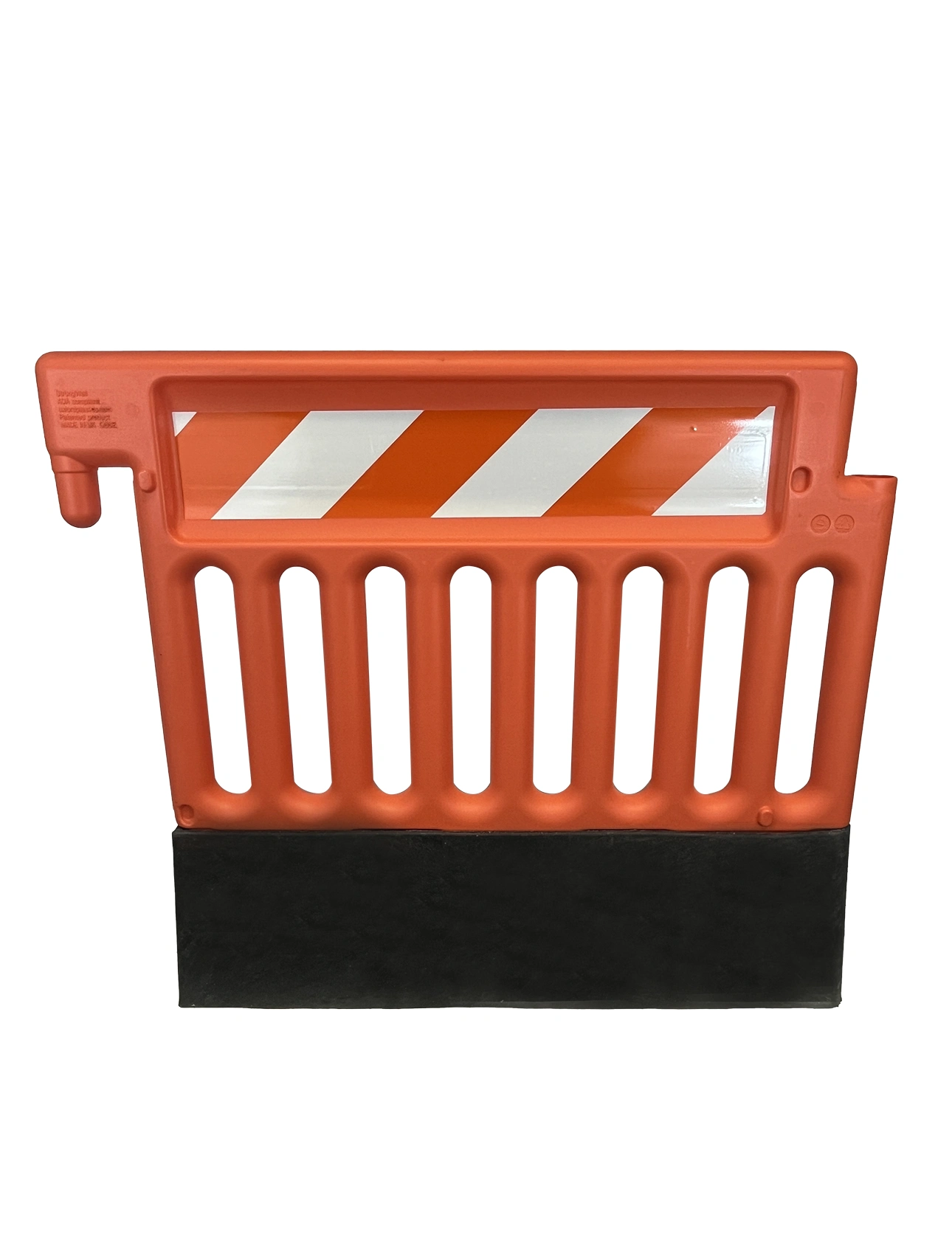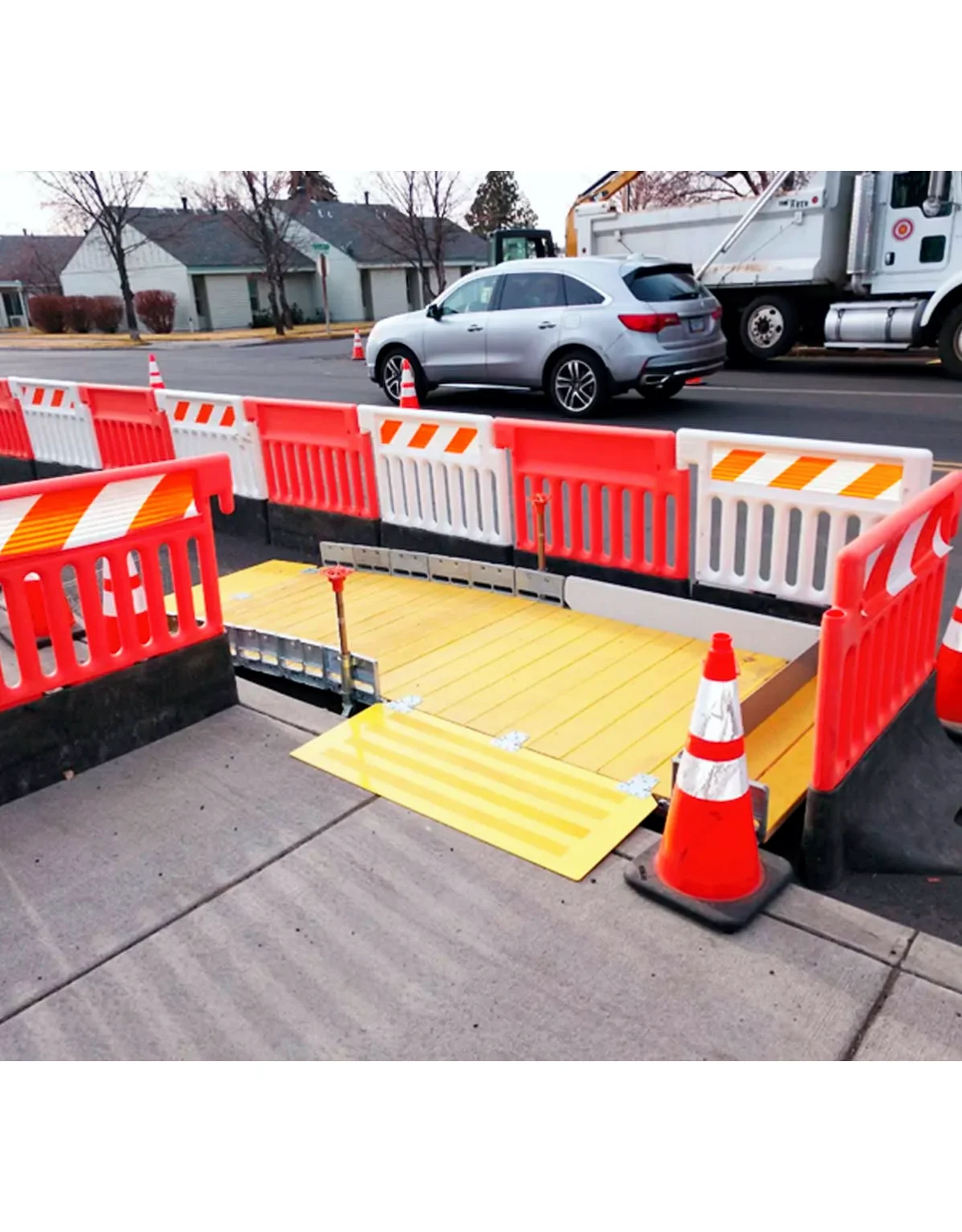Understanding Pedestrian Barricades: Safety & Uses
Pedestrian barricades are essential safety tools used to manage and protect foot traffic in various environments, from bustling urban streets to active construction sites. These physical barriers are designed to guide pedestrians, prevent unauthorized access to hazardous areas, and enhance overall safety by creating clear boundaries between people and potential dangers. This article from Traffic Safety Store explores what pedestrian barricades are, their purposes, and their critical roles in traffic safety, construction, and work zones.What Is a Pedestrian Barricade?
A pedestrian barricade is a temporary or semi-permanent structure used to control the movement of people on foot. Typically made from durable materials like plastic, steel, aluminum, or concrete, these barricades come in various forms, including interlocking panels, A-frame barriers, water-filled barriers, and modular fencing systems. They are often feature bright colors —commonly orange, yellow, or red—to ensure high visibility and may feature reflective sheeting or lights for low-light conditions. Pedestrian barricades are also sometimes designed to comply with the Americans with Disabilities Act (ADA), incorporating features like continuous top rails at accessible heights, no-trip bases, and tubular steel legs to guide visually impaired pedestrians safely around work zones. Their modular and lightweight designs make them easy to transport, deploy, and store, while some models can be ballasted with water or sand for added stability. Explore our ADA-compliant pedestrian barricades for your next project.What Are Pedestrian Barricades Supposed to Do?
Pedestrian barricades serve several key functions, all aimed at enhancing safety and order:- Guide Foot Traffic: Barricades create designated pathways to direct pedestrians through or around complex areas, such as construction zones, temporary traffic areas, or event spaces, reducing confusion and preventing unsafe wandering.
- Prevent Access to Hazardous Areas: By forming a physical barrier, they keep pedestriacns away from dangers like heavy machinery, open excavations, or moving vehicles, significantly reducing the risk of accidents.
- Enhance Visibility: Bright colors, reflective surfaces, and optional lighting make barricades highly visible to both pedestrians and drivers, alerting them to potential hazards and encouraging caution.
- Ensure Accessibility: ADA-compliant barricades accommodate all pedestrians, including those with disabilities, by providing stable, no-trip designs and clear pathways.
- Maintain Order at Events: During large gatherings like festivals, outdoor events, or even lawful protests, barricades can help manage crowd flow, designate restricted areas, and prevent unauthorized access, ensuring safety and security.
Role in Traffic Safety
Pedestrian barricades play a vital role in traffic safety by separating foot traffic from vehicular traffic, particularly in areas where the two coexist, such as urban intersections or road construction zones. According to the Governors Highway Safety Association, at least 7,508 pedestrians were killed in U.S. roadway crashes in 2022, highlighting the need for effective safety measures. Barricades help mitigate these risks by:- Creating Safe Pathways: In high-traffic areas, barricades delineate pedestrian zones, reducing the likelihood of vehicle-pedestrian collisions. For example, water-filled barriers or steel barricades can form a continuous wall that drivers treat as a solid boundary, discouraging intrusions into pedestrian areas.
- Supporting Traffic Management: Barricades guide vehicles away from pedestrian-heavy zones, complementing other traffic control devices like cones and signs. This is critical at intersections, where 60% of pedestrian injuries in urban centers occur at signalized crossings.
- Enhancing Driver Awareness: Brightly colored barricades signal to drivers to slow down, especially near work zones or events. Research shows that longitudinal channelizing devices (LCDs), like water-filled barricades, are more effective than cones or drums in helping drivers navigate work zones safely.
Role in Construction and Work Zones
Construction and work zones are inherently hazardous, with risks from heavy equipment, uneven terrain, and moving vehicles. Pedestrian barricades are indispensable in these environments, serving to protect both workers and passersby. The Federal Highway Administration reports that work-zone crashes have caused 4,400 deaths and 200,000 injuries over five years, underscoring the importance of robust safety measures.- Protecting Workers and Pedestrians: Barricades create a secure perimeter around construction sites, shielding workers from errant vehicles and keeping pedestrians out of dangerous areas. For instance, interlocking steel barricades or jersey-shaped plastic barriers prevent pedestrians from wandering into zones with operating cranes, where 42 deaths occur annually due to equipment-related accidents.
- Demarcating Work Zones: Barricades clearly define the boundaries of active work areas, reducing the risk of vehicles or pedestrians entering hazardous zones. Lightweight plastic barricades, like the Billboard Barricade, are ideal for quick setups in temporary work zones, such as parking lot repairs, while more robust options like water-filled LCDs are used in high-speed road construction.
- Complying with Regulations: The Manual on Uniform Traffic Control Devices (MUTCD) and the American Association of State Highway and Transportation Officials (AASHTO) set standards for barricade crashworthiness, ensuring they can redirect vehicles and protect workers. Type I, II, and III barricades, for example, vary in size and rail count to suit different traffic conditions, from low-speed streets to highways.
- Reducing Liability: Proper barricade use minimizes accident risks, protecting construction companies from legal and financial consequences. Inadequate signage or barriers can lead to liability for crashes, as seen in cases where construction firms were held responsible for accidents due to poor safety measures.
Innovations and Best Practices
Recent advancements in pedestrian barricades have improved their effectiveness. Modular designs allow for quick reconfiguration, while accessories like fence panels, privacy screens, and vehicle/pedestrian gates enhance functionality. Some barricades now include custom signage to display project information or warnings, increasing both safety and public awareness. Best practices for deploying pedestrian barricades include:- Strategic Placement: Position barricades to clearly define safe zones and control access, ensuring they are visible from all angles.
- Regular Maintenance: Inspect barricades for damage and ensure reflective surfaces remain effective, especially in long-term projects.
- Compliance with Standards: Use MUTCD-compliant and ADA-compliant barricades to meet legal and accessibility requirements.
- Adaptability: Choose barricades suited to the specific site conditions, such as portable water-filled barriers for temporary setups or heavy-duty steel for high-traffic areas.
Conclusion
Pedestrian barricades are more than simple barriers; they are critical tools for ensuring safety and order in environments where pedestrians and hazards coexist. By guiding foot traffic, preventing access to dangerous areas, and enhancing visibility, they play a pivotal role in traffic safety, construction, and work zones. As urban areas grow and construction projects multiply, the use of well-designed, compliant barricades will remain essential to protecting lives and reducing accidents. Whether at a festival, a road repair site, or a major highway project, pedestrian barricades are a cornerstone of safe, efficient, and accessible public spaces. Shop Pedestrian Barricades NowSources: Governors Highway Safety Association (2022 pedestrian death estimates), Federal Highway Administration (work-zone crash statistics), Manual on Uniform Traffic Control Devices (MUTCD), and various industry resources.

ADA Pathcade Barricades
ADA Pathcade Barricades
Quick Facts:
- Multi-Functional & ADA-Compliant: Designed for pedestrian pathways, crowd control, and more, with a continuously detectable edge and tripod legs for ADA compliance.
- Quick Deployment & Stability: Soft-grip handle system for fast foot deployment; no sandbags needed when using all three feet.
- Flexible & Efficient Design: Pivots up to 120° for varied layouts, stacks 20% more efficiently to reduce transport costs, and features stable stacking lugs.
- Customizable & User-Friendly: Includes recessed sheeting areas, signage holes, and shelves for barricade lights; available in orange or white with optional retroreflective sheeting.
- Certified & Durable: MASH Accepted WZ-428, meets MUTCD standards, and proudly made in the USA.


Plasticade Strongwall ADA Pedestrian Barricades
Plasticade Strongwall ADA Pedestrian Barricades
Quick Facts:
- ADA Compliant and Accessible – Ensures clear, obstacle-free pathways that meet accessibility standards.
- Durable and Visible – Built to withstand heavy use with high-contrast colors and reflective materials for enhanced safety.
- Interlocking and Easy to Deploy – Modular design allows for quick setup and secure, continuous barricades.

"Urbanite" Crowd Control Barricades
"Urbanite" Crowd Control Barricades
Quick Facts:
- 72" Long x 38" Tall x 3" Wide
- Two Colors to choose from
- Approximately 23 lbs. each


